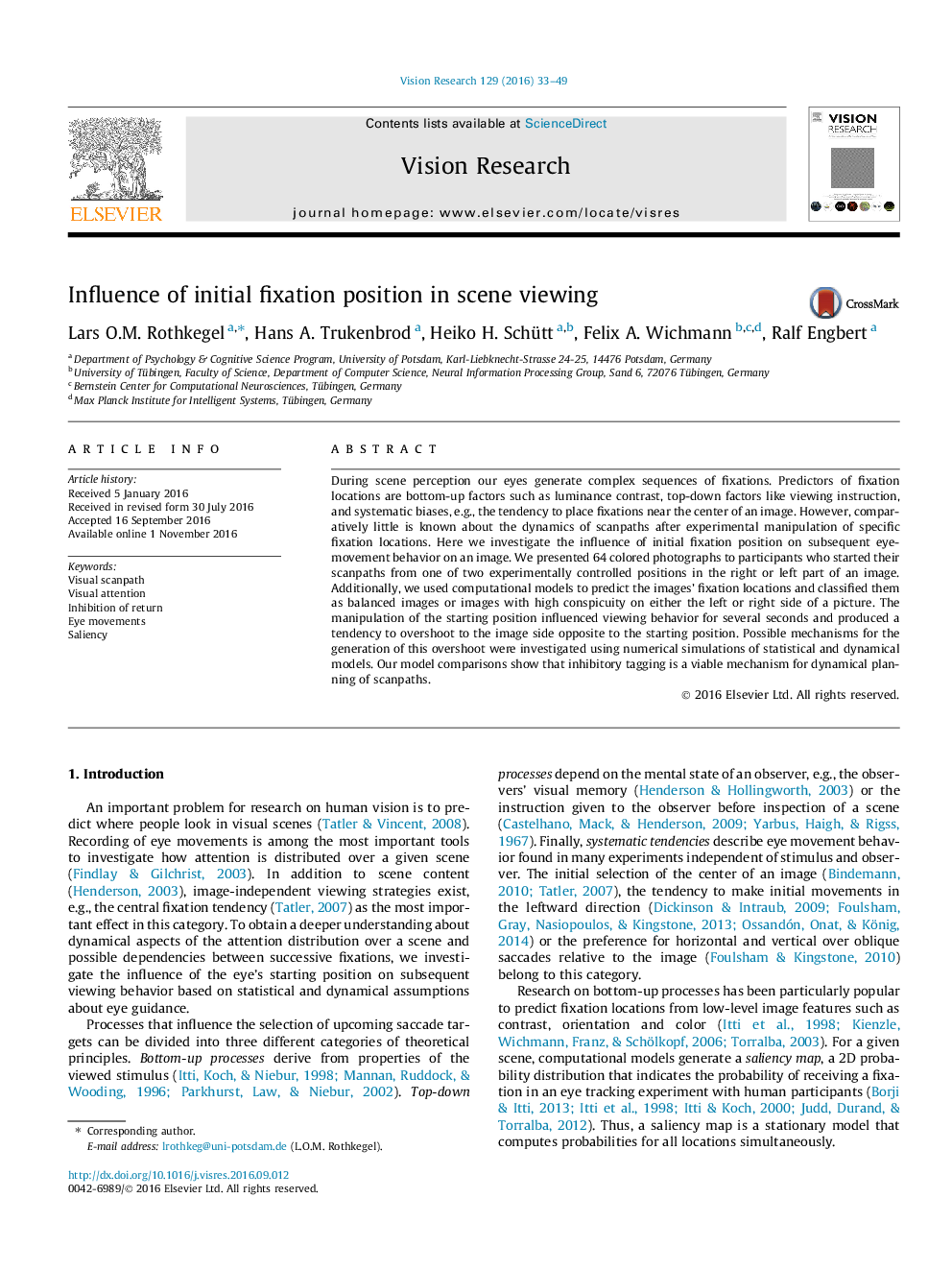| Article ID | Journal | Published Year | Pages | File Type |
|---|---|---|---|---|
| 5705956 | Vision Research | 2016 | 17 Pages |
Abstract
During scene perception our eyes generate complex sequences of fixations. Predictors of fixation locations are bottom-up factors such as luminance contrast, top-down factors like viewing instruction, and systematic biases, e.g., the tendency to place fixations near the center of an image. However, comparatively little is known about the dynamics of scanpaths after experimental manipulation of specific fixation locations. Here we investigate the influence of initial fixation position on subsequent eye-movement behavior on an image. We presented 64 colored photographs to participants who started their scanpaths from one of two experimentally controlled positions in the right or left part of an image. Additionally, we used computational models to predict the images' fixation locations and classified them as balanced images or images with high conspicuity on either the left or right side of a picture. The manipulation of the starting position influenced viewing behavior for several seconds and produced a tendency to overshoot to the image side opposite to the starting position. Possible mechanisms for the generation of this overshoot were investigated using numerical simulations of statistical and dynamical models. Our model comparisons show that inhibitory tagging is a viable mechanism for dynamical planning of scanpaths.
Related Topics
Life Sciences
Neuroscience
Sensory Systems
Authors
Lars O.M. Rothkegel, Hans A. Trukenbrod, Heiko H. Schütt, Felix A. Wichmann, Ralf Engbert,
